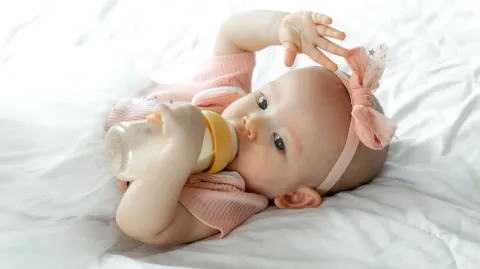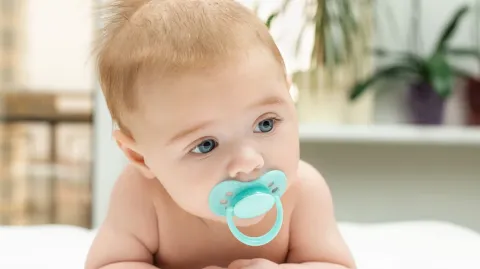Understanding Quality in Baby Products: Brand or Ingredients?
When new parents start shopping for baby products, they often gravitate toward familiar brands. Large logos on store shelves instinctively give a sense of safety.
However, true quality is not always hidden behind a brand name.
Some small manufacturers can offer safer products with simpler ingredients than well-known brands that rely heavily on chemical filters.
When evaluating a product, focus not on its name, but on its ingredients and production standards.
- Brand recognition, advertising power, and attractive packaging may influence consumers but your baby’s skin doesn’t care about any of that. What matters is that the product in contact with your baby’s skin has a harmless and well balanced formula.
Focusing on Ingredients: The Habit of Reading Labels
Before buying a product, the first thing you should do is turn it around and read the label.
The small text on the back reveals the product’s true nature.
Look for ingredients such as:
- Natural oils: Olive, almond, or coconut oil help nourish and soften the skin.
- Botanical extracts: Chamomile, aloe vera, or lavender provide a soothing effect.
- Hypoallergenic formulas: Reduce the risk of allergic reactions.
- Fragrance- and alcohol-free: Essential for a baby’s sensitive skin.
Avoid products containing:
- Parabens, SLS, SLES: May weaken the skin barrier.
- Artificial colors and fragrances: Can trigger eczema and irritation.
- Formaldehyde derivatives: Pose long term health risks.
- If the label is full of complex chemical names, it’s usually a sign that the product is far from natural.
Packaging, Production, and Storage Quality
Packaging is not just a design element it’s part of the product’s safety.
- Airtight caps prevent air contact and protect the formula.
- Choose BPA free plastic or glass containers.
Recyclable materials reflect an eco conscious production mindset.
Also, always check the manufacturing and expiration dates.
Recently produced items maintain their active ingredients and effectiveness.
Products that have been sitting on shelves for too long may lose stability and potency.
Certifications Are True Guarantees
A product’s reliability is proven not by the manufacturer’s claims, but through independent testing.
When shopping, look for certifications on the packaging such as:
- Dermatest approved: Passed dermatological testing.
- Ecocert or COSMOS: Represents organic production standards.
- TSE or CE: Indicates compliance with safety standards.
- ISO 9001: Ensures consistency in production quality.
These logos are not mere decorations they represent laboratory testing, analysis, and strict quality audits.
User Reviews and Real Experiences
Before choosing a product, reading other parents’ reviews can make a big difference.
Focus not only on comments like “I liked it” or “It smells nice,” but on details such as:
Duration of effectiveness
Skin reactions
Ease of use
Real experiences provide far more honest insights than marketing slogans.
Also, every baby’s skin is different.
A product that works perfectly for one baby may cause irritation in another.
That’s why it’s safest to start with small-sized products for testing.
Price, Quality, and Ingredient Balance
A high price doesn’t always mean high quality.
Some brands spend heavily on packaging and marketing while neglecting the formula itself.
True quality lies in the balance of clean ingredients, safe production, transparency, and fair pricing.
A product with simple, natural, and certified ingredients is far more valuable than an expensive brand filled with chemicals.
In baby products, safety and sustainability should come before luxury.
Conscious Parents, Safe Babies
The first instinct of every parent is to protect.
But protection isn’t achieved merely by trusting a brand it comes through knowledge.
If you make a habit of reading labels, researching ingredients, and checking certifications,
you’ll make the best choices for both your baby and your budget.





Comments0
No comments yet — be the first to comment!